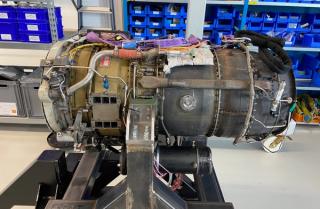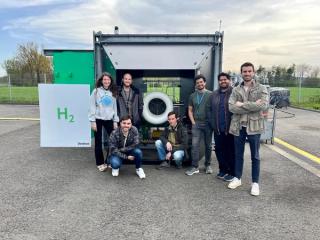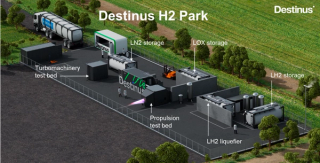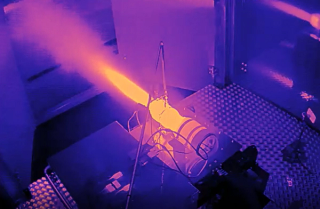The CJ610 is a classic turbojet engine widely used in commercial and military aircraft. Manufactured by General Electric Aircraft Engine, this 50-year-old engine can generate 1,338 kg of thrust through its 8-stage compressor and 2-stage turbine. It is set now to propel the newest prototype during its take-off and subsonic stages: Destinus-3. And the tailor-made afterburner will allow this prototype to reach supersonic speeds.
Originally designed to burn kerosene, a less dense form of gasoline, the engine requires modifications to accommodate the specific properties of hydrogen. These modifications are an essential step towards Destinus's visionary goal of achieving a full hydrogen-powered flight: a safe, efficient, and sustainable fuel.
From Kerosene to Hydrogen: A Sustainable Propellant
Hydrogen-based energy has been attracting scientists and governments around the globe for the past decades. Recently, this interest has grown exponentially for a good reason: it shows undeniable potential in the fight for decarbonization. Hydrogen can be received out of water through a simple electrolysis process, releasing only oxygen as a byproduct. Once obtained, the hydrogen is highly reactive and easy to ignite, making it an excellent candidate for a sustainable and efficient fuel to power supersonic aircraft.
The Crucial Role of Experimental Confirmation
At Destinus, we have an empirical philosophy: we prioritize experimental results over theoretical speculations. This method has enabled us to grow fast, remain competitive, and produce observable results.
Traditionally, the relationship between the amount of kerosene injected and the thrust generated by the engine is well understood. However, hydrogen introduces different properties, prompting Destinus engineers to estimate theoretically the amount of hydrogen needed to reach a given thrust. The objective is to validate these calculations through experiments, confirming the forecasted amount and rate of hydrogen needed and adjusting if necessary. To analyze whether the engine responds as predicted, engineers will inject small amounts of gaseous hydrogen (GH2) into the combustion chamber. Testing must be performed on the upcoming Hydrogen Propulsion Test Site of Destinus in Payerne, Switzerland, to ensure a safe and reliable environment.
Adapting the Engine for Hydrogen Control
The shift to hydrogen induces an adaptation of the engine for precise control over the injected hydrogen within the combustion chamber. In that sense, Destinus engineers have developed an inhouse, 3D-printed injector specifically designed for this use case. Those tailored injectors have replaced the initial injectors to meet the unique requirements of hydrogen combustion.
Gas, then liquid hydrogen: A Necessary Approach
The first tests will involve hydrogen gas (GH2) due to the challenge of storing liquid hydrogen at extremely low temperatures, around -250°C. Failure to comply with these requirements could lead to liquid hydrogen turning into a gaseous state, expanding, and creating a risk of potential rupture. Despite its lower efficiency, GH2 provides a safe and valuable means to analyze the engine's behavior with hydrogen when combined with the new injectors.










